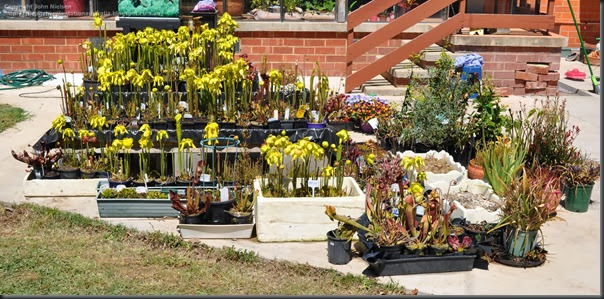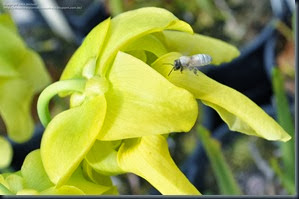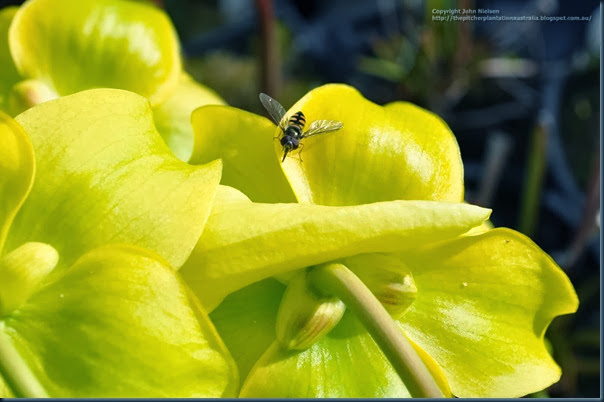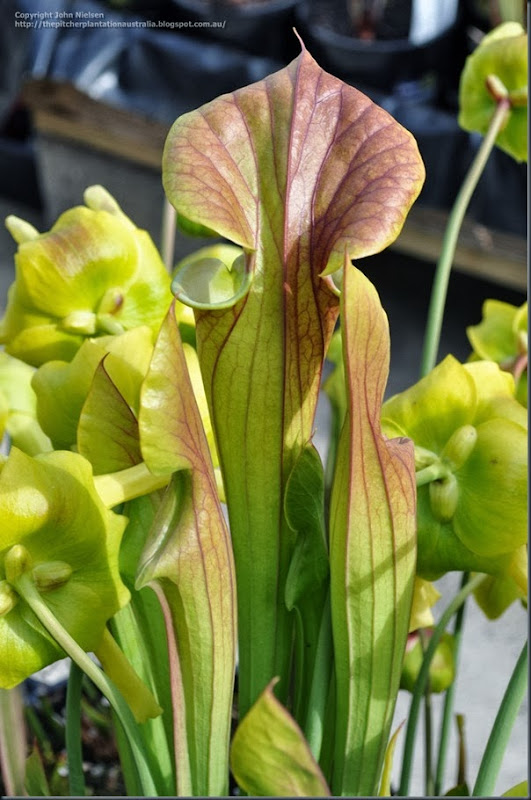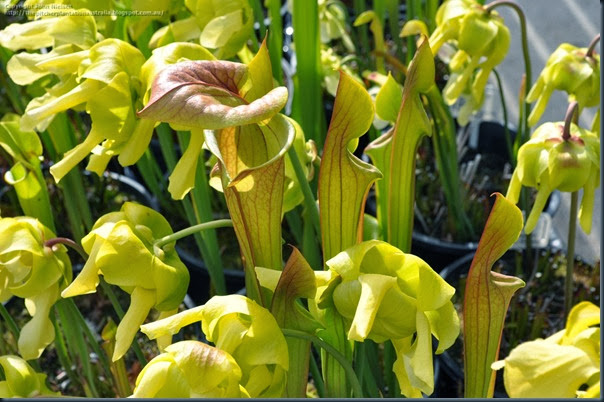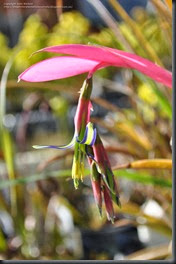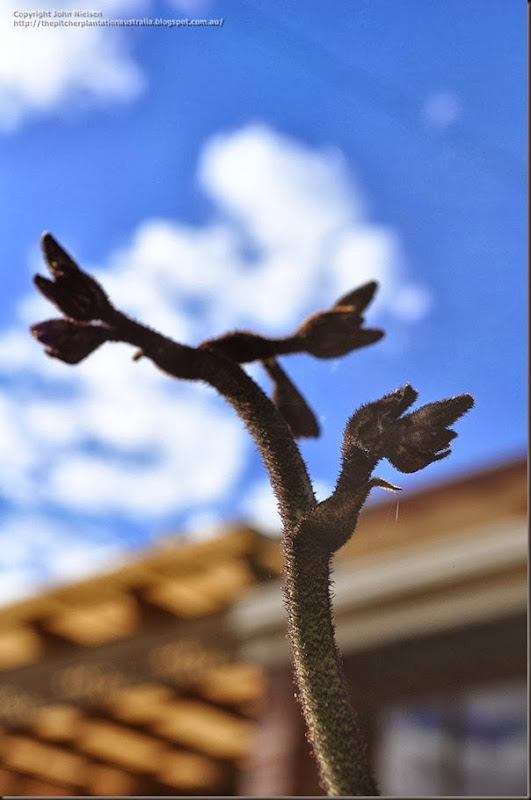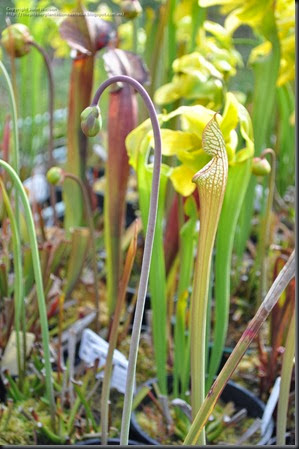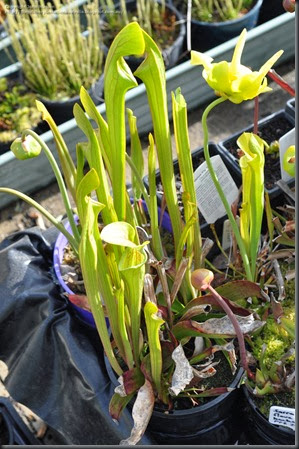Spring is here! At last! The collection is in bloom! Just look at all the yellow of the Sarracenia flava!
Spring admittedly sprung a few weeks back, but things have been so busy at my end that it was only this morning I found some time to get out the camera and take some photos. Complicating things has been the weather here – spring is quite windy in Canberra, and the average wind gust every hour since 12 noon has been 50km/h (31 mph).
One sucky thing I discovered the hard way is that I am allergic to Sarracenia pollen! Crap! I deliberately let the plants flower this year to get seeds, but I had to give up pollinating them because I couldn’t stop sneezing. Fortunately for me, I have had some helpers – bees. Curiously, they have never bothered with Sarracenia flowers before this year. But there are at least one or two bees at any one time pollinating my S. flava for me. I am personally not bothered by the prospect of open pollination. Who knows what the lottery will produce? Fortunately, the hybrids have not opened yet, and I have not seen any bee go near the only open flowers of S. rosea.
One cross I did make was between each of my clones of S. flava var. maxima. This form is an uncommon plant here, so the more clones the merrier. They may be devoid of any red on the pitchers, but they glow brilliantly in the sun. Note that they have caught prey already, despite the oldest pitcher opening Wednesday. This is the first time these clones have flowered for me. I just hope the honeybees don’t muck my crosses up…
Speaking of prey, insects are not yet at their zenith yet. Right now, the commonest insects are hover flies (Syrphidae), which are hanging around our place in the thousands. The main attractor is not the Sarracenia but the Photinia hedges ubiquitous here.
But back to the plants already. Here is the most spectacular pitcher open so far – a S. flava var. cuprea, from Gotcha! Plants. This plant gets magnificently coppered hoods and heavy veins down the pitcher. This plant has developed many divisions now, and should put on a magnificent show later this spring.
And another view…
Also in flower is one of the few bromeliads that can take sub zero temperatures, Billbergia nutans. I have always loved this plant, ever since I first laid eyes on it in a Nambour nursery that was being shut down in 1997, and grew it alongside my bog garden of Sarracenia in Queensland for many years. I was amazed when Phil Reytter at Lithgow showed me it in his garden and assured me of its frost hardiness. This plant is set to form a magnificent display in our new garden, probably in large planter boxes.
We also like Kangaroo Paws (Anigozanthos), so when we came across this black kangaroo paw (Macropidia fuliginosa, right photo) at our local nursery, I snapped it up right away. These flowers are not yet open; here is what they look like when opened. We aim to have some large displays of both Anigozanthos and Macropidia plants later this year, so expect more photos of our trials and tribulations in learning to grow them. I have seen wild kangaroo paws (Anigozanthos) growing with Drosera gigantea, D. erythrorhyza and D. glanduligera near Perth, so maybe I can include some nice tuberous Drosera in our collection of these lovely plants.
And to close, here are two plants promising to give a good season. At left is one of my few divisions of S. leucophylla “Tarnok”. Gotcha! Plants imported this clone ex tissue culture from China (!) and seem to be the only supplier in Australia. At right is a unique form of S. oreophila, a clone originating from a former colleague. It produces magnificent red veined pitchers that correspond to var. ornata of S. oreophila. The chopped off pitcher was the result of a stray stone being flung by the lawn mower yesterday (mutter mutter grumble grumble). I would like to re-obtain the Triffid Park S. oreophila, which is more a var. cuprea. If we can make the Triffid Park open day…
I’m off with work for a fortnight from next weekend to attend some conferences on invasive species, so I will bid goodbye for now. Expect a new post in early November.
All the best in the meantime.
JN.
